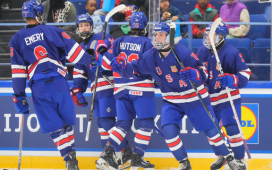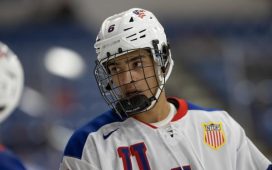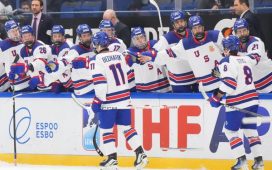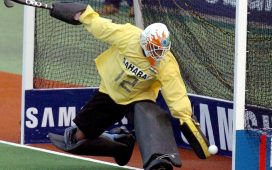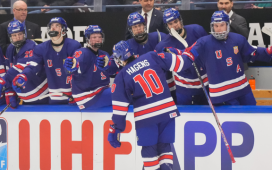The Tampa Bay Lightning put the boots to the rest of the NHL last season. Actually, check that: the Lightning put the boots to the rest of the NHL last regular season. Important distinction, that.
But well before Tampa Bay embarked on a truncated post-season run, it took no more than several weeks for the hockey world to sit up and take notice of what the Lightning were doing to the competition. By the end of the opening month, Tampa Bay had lost only twice. By the end of November, the Bolts had suffered just eight defeats. And by this time last year, it was becoming abundantly clear that the pre-season’s top-odds Stanley Cup contender was ready to raze a path to the Presidents’ Trophy and post one of the best records in league history. That’s exactly what the Lightning did, finishing the season with an NHL record-tying 62 wins and a 128-point season that stands as the fourth best of all-time.
So, why bring this up now? It’s certainly not without reason.
You see, on this date last season, the Lightning were well on their way to establishing themselves as one of the most dominant clubs the league had seen in some time. In 32 games, Tampa Bay had accumulated 24 wins, 49 points and sat atop the league by six points with the holiday break fast approaching. And exactly one year later, as Washington prepares to enter a mega-powers battle against the Boston Bruins, the Capitals do so having registered 22 wins and 49 points through their first 32 games, putting them on pace for a 126-point campaign. And they’ve done this all with seemingly a fraction the fanfare of last season’s Lightning.
Maybe there’s a reason for that. Maybe it’s because there’s a hesitance to celebrate the Capitals’ success when the Bolts crashed and burned so spectacularly last season. Maybe it’s because the gap between Washington and the next-best team, the aforementioned Bruins, is only three points. Or maybe it’s because we’ve grown used to seeing this out of the Capitals. After all, if Washington finishes this season with 105 points or more, it will mark the sixth time in the past 10 full 82-game campaigns they have done so. Regular season dominance does get a little ho-hum after so long, that much is true.
Even still, it feels like this season’s Capitals aren’t quite getting their due. The spotlight has been shone on certain players, to be sure. John Carlson, for instance, has received no shortage of praise around these parts for his play, including a few looks at his Norris candidacy and potentially historic scoring pace. But Carlson isn’t the only one – nor the only aspect of Washington’s success – who should be heralded.
One undeniably brilliant attribute of these Capitals, and one that hasn’t been noted enough, is that the depth of scoring is unrivalled throughout the NHL. While Carlson is pacing the group with 11 goals and 43 points, the Capitals have another five players with at least 10 tallies and another six with 20 or more points. (The six 10-goal players and seven 20-point scorers are league-best totals.) Included in that group, as one might expect, are the usual suspects. Alex Ovechkin has 20 tallies and 33 points, Evgeny Kuznetsov has 12 goals and 30 points, both Tom Wilson and T.J. Oshie are part of the group, and despite missing eight games this season, Nicklas Backstrom has also passed the 20-point threshold.
The surprise of the bunch, though, has been Jakub Vrana, who after a noteworthy-but-not-altogether-breakout 24-goal, 47-point performance last season finds himself on pace to flirt with the 40-goal and 70-point plateaus this season. Should we expect him to get there? Probably not given he doesn’t skate prime minutes on a consistent basis, but even if he reaches the 30-goal and 60-point marks this season, he will have provided the already offensively gifted Capitals with yet another weapon. None of this is to mention the secondary offense that has also been provided by the likes of Lars Eller and defensemen Dmitry Orlov and Michal Kempny.
It’s the sheer volume of offensive talent that has helped the Capitals turn into one of the league’s most opportunistic teams, too. In none of the shot, shot attempts or chances metrics is Washington at the top of the heap. Matter of fact, the Capitals’ seventh-best 27.2 scoring chances per 60 minutes rate is the highest it ranks in any of the notable underlying team statistics. But when they get those chances – and any chance, really – Washington is shooting out the lights. The Capitals are tied for 10th with a 14.3 shooting percentage on scoring chances at five-a-side, rank sixth with at 19.4 percent on high-danger chances and only five teams have a higher 5-on-5 shooting percentage than Washington’s 9.3 percent.
It’s by way of an offense that has made the most of any and all opportunities that the Capitals have been able to mask what deficiencies they do have. For instance, Washington’s goaltending duo is tied for 18th in the NHL with a .917 SP at fives. The Capitals are also a middling team with a 16th-ranked 50.2 Corsi percentage, 15th-ranked 49.6 shots percentage and 12th-ranked 51.1 expected goals for percentage. But mediocre 5-on-5 numbers haven’t meant much of anything to Washington because few teams have been able to keep pace with their attack.
The million-dollar question is whether it can hold, of course. Even if it doesn’t, though, the Capitals’ 100.9 PDO suggests that there’s little wizardry at work here, that we’re seeing in Washington is worth believing. And that should strike fear into the rest of the Eastern Conference, because a Capitals team that has climbed the mountain before sure looks as though they have the pieces in place to attempt to blast their way there once again.
Want more in-depth features, analysis and an All-Access pass to the latest content? Subscribe to The Hockey News magazine.
